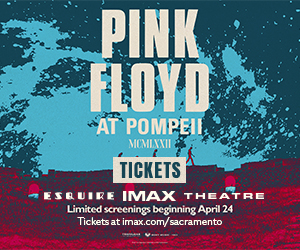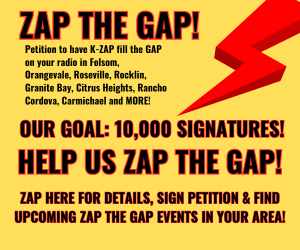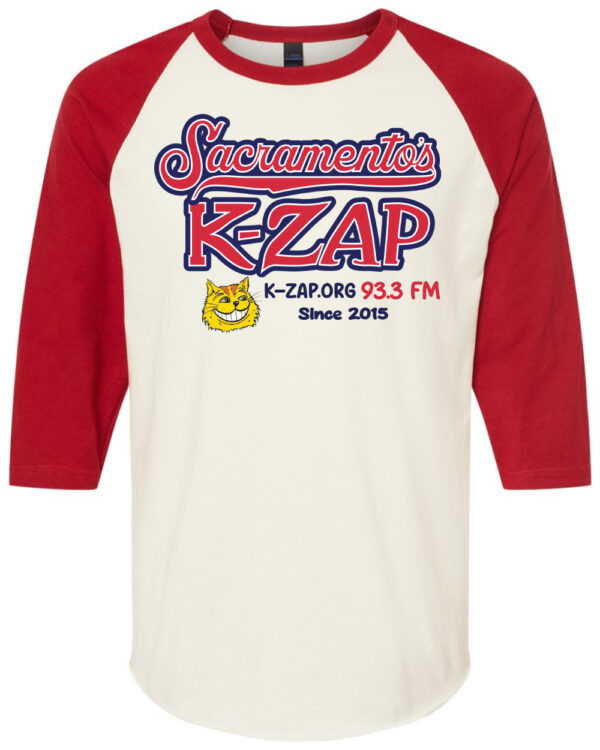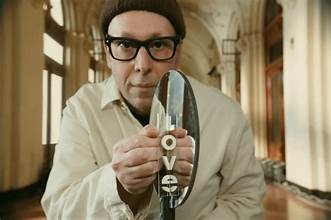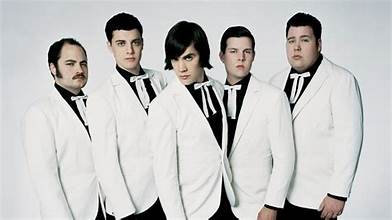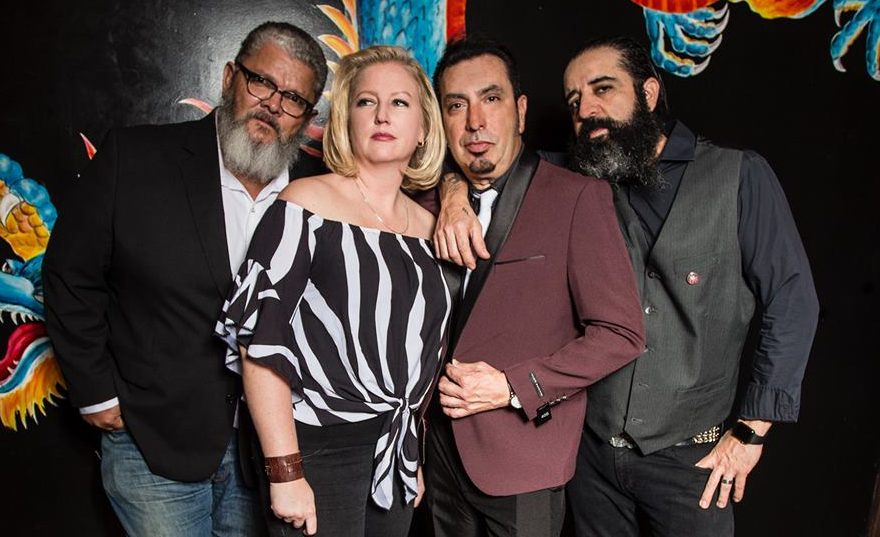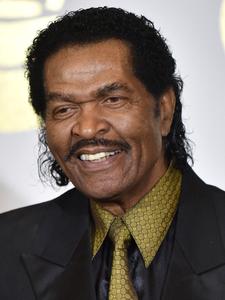Home
K-ZAP Instagram
Join us this Saturday, April 26th, 2025, for "Mick Martin`s Blues Party" on Sacramento`s K-ZAP 93.3 FM from 10 am to noon, and groove all week at k-zap.org/blues! 🎶 MMBP is powered by the generous sponsorship of our friends at autoaccident.com and Powerhouse Pub in Folsom. Here`s the lineup:
🎸 Matt Schofield Trio
🎸 Savoy Brown
🎸 Sean Chambers
🎤 Janiva Magness
🎤 Janiva Magness w/Joe Bonamassa
🎸 The Blues Project feat. Danny Kalb
🎸 The Blues Project feat. Al Kooper
🎸 The Blues Project feat. Steve Katz
🎸 The Blues Project feat. Tommy Flanders
🎸 Peter Green w/Fleetwood Mac
🎸 Snowy White
🎸 Gary Moore
Tune in via:
🌐 Stream at k-zap.org
📱 Download the K-ZAP App for Apple or Android
📻 93.3FM if you’re in the Metro Sacramento area
Support the Blues:
👕 Grab an MMBP shirt at k-zap.org/product/sacramentos-k-zap-mick-martin-blues-party
💸 Donate at k-zap.org/blues
Crank it up, Sacramento, and let the blues take you away! 🎵 #kzaporg #mickmartinsbluesparty #PowerHousePub #autoaccident
…
E Street Band legend Max Weinberg on the unreleased “kick ass” album that’s become the holy grail for hardcore @springsteen fans
In April 1982, Bruce Springsteen and the E Street Band assembled at Power Station studio in midtown Manhattan to recored the follow-up to the New Jersey singer/songwriter’s Billboard chart-topping fifth album, “The River.”
Springsteen had already demoed the songs at home on a four-track Tascam 144 portastudio and was excited to flesh the sparse acoustic recordings out with his crack collaborators.
“The songs were the opposite of the rock music I’d been writing,” he recalled in his 2016 memoir Born To Run. “They were restrained, still on the surface, with a world of moral ambiguity and unease below. The tension running through the music’s core was the thin line between stability and that moment when the things that connect you to your world, your job, your family, your friends, the love and grace in your heart, fail you. I wanted to the music to feel like a waking dream and to move like poetry. I wanted the blood in these songs to feel destined and fateful.”
After two months in the studio, in June 1982 Springsteen began mixing both the acoustic and full-band sessions.
“I had these two extremely different recording experiences going,” he told MOJO magazine in 1999. “I was going to put them out at the same time as a double record. I didn’t know what to do.”
“On listening, I realized I’d succeeded in doing nothing but damaging what I’d created,” he wrote in Born To Run. “We got it to sound cleaner, more hi-fi, but not nearly as atmospheric, as authentic.”
In a 2010 interview with Rolling Stone, E Street Band drummer Max Weinberg said that the electric versions of “Nebraska” “was all very hard-edged.”
“There’s been this myth that they weren’t well played but we played the hell out of them,” he insists. “I know the songs were recorded, the tracks are there, so I hope one day “Electric Nebraska” does make the light of day.”
Catch the stream at k-zap.org, on the k-zap apps or at 93.3 FM in the metro Sacramento area.
#kzaporg
…
This week’s Rush Hour Blues gets you stoked for Friday night’s @larkinpoe’s Fillmore show.
Join Sacramento’s K-ZAP this Friday 5p as your host Bill Prescott dips into some of Rebecca and Megan Lovell’s bluesier tracks.
RHB is sponsored by @blackrockauto, 1313 C street Sacramento. “They can do Stuff.”
Catch the stream at k-zap.org, on the k-zap apps or at 93.3 FM in the metro Sacramento area.
#kzaporg
…
@lindaronstadtmusic Covered the Rolling Stones So Well, the Band Said She Practically Owned This ‘Exile on Main St.’ Classic
Whether singing country, Latin, or rock music, Ronstadt made every performance her own, regardless of whether or not she wrote the songs she was singing.
Such was the case for a cover of the Rolling Stones’ 1972 track “Tumbling Dice,” the A-side closer to their album “Exile on Main St.”Ronstadt’s backing band had begun playing the laid-back groove during soundcheck, but because no one knew the actual words, they never incorporated it into the actual show.
That is, of course, until Ronstadt happened upon Rolling Stones frontman Mick Jagger backstage at one of her shows in the late 1970s. “When Mick walked backstage at my Amphitheatre show, he told me, ‘You do too many ballads in your show. You should do more rock ‘n’ roll.’ I told him I thought he should do more ballads, and we teased each other about it. But I made him write down the words to that song for me so we could do it,” per Far Out Magazine.
Ronstadt put her version of “Tumbling Dice” on her 1977 album, “Simple Dreams.”
The following year, she made a surprise appearance at a Rolling Stones concert in Tucson, Arizona, to perform the song with the band.
Personal anecdotes from attendees of that show remember Keith Richards and Jagger saying that although they wrote the song, Linda Ronstadt owned it.
Given the musicians’ friendship and respect for one another, it’s not surprising that the British rockers would give her such high praises.
The Rolling Stones’ 1972 track, “Tumbling Dice,” features plenty of Mick Jagger tropes one might expect from an “Exile on Main St.”track. The song begins with Jagger lamenting, Women think I’m tasty, but they’re always tryin’ to waste me. Baby, baby, don’t need no jewels in my crown.
Ronstadt ended up changing the lyrics slightly in her rendition of the rock track, starting the song with, People try to rape me, always think I’m crazy, make me burn the candle right down.
Catch the stream at k-zap.org, on the k-zap apps or at 93.3 FM in the metro Sacramento area.
#kzaporg
…
@sammyhagar on a couple of his most significant songs
Montrose, “Rock Candy” (1973)
Ted Templeman, who’d signed us, came to rehearsal the day before we were going in the studio. We didn’t have any money, so we thought we were just gonna go in and play the songs almost live, then get out on the road, which was our dream. Ted goes, “If only we had one more song … You guys got any ideas?” Denny Carmassi plays that drum beat, and Ronnie starts playing the riff. I’m sitting there listening — that’s the reason the intro’s so long, because I was just waiting — and finally I start singing, “You’re rock candy, baby — hard, sweet and sticky.”
We never even used to play it live because it was so slow. Now I’ve played it in probably 90% of the sets I’ve done since then. I always play it because that drum thing is so iconic. Denny was a big John Bonham freak, and that’s just pure Bonham right there. But a lot of guys can’t play that sparse and hold a groove back that long like Denny did.
Van Halen, “Why Can’t This Be Love” (1986)
Everyone talks about me ruining Van Halen — the Roth fans or the people that just will not let go of that era — but I had nothing to do with nothing. I wrote the songs with Eddie, but they were his musical ideas to begin with. He’d reinvented the guitar neck and was kind of burnt out on it — couldn’t do much more with the thing. He really wanted to play a lot of keyboards, but he was used to getting s— from Roth and Al about it.
I remember he started playing “Love Walks In,” and I’m going, “This is a beautiful piece of music. Why the f— have you not used this?” He said, “Man, I’ve been sitting on this for like three years.” Dave just didn’t sing like that — he probably couldn’t bring something like that home. Eddie had all these other keyboard songs: “Why Can’t This Be Love,” “Feels So Good,” “When It’s Love.”
Mo Ostin, the president of Warner Bros. Records, came in and we played him the song. He got the biggest grin on his face, sticks his finger in the air and goes, “I smell money.” That’s why it was the first thing to come out.
Catch the stream at k-zap.org, on the k-zap apps or at 93.3 FM in the metro Sacramento area.
#kzaporg
…
🌹🎸🌀 Get ready to groove this Thursday at 9pm, Pacific, with Sacramento`s K-ZAP for the Grateful Dead Hour. Host David Gans is taking you back to the cosmic vibes of:
Part 1
From the Grateful Dead`s legendary show at Winterland, San Francisco on 6/17/75:
Blues for Allah – A mystical journey into the unknown. 🌌🙏
Drums – Drums – The heartbeat of the Dead, pulsing through the night. 🥁🔥
King Solomon’s Marbles – A jazzy, intricate gem from the Dead’s playbook. 🎶👑
Blues for Allah – Closing the loop with soulful, spiritual vibes. 🌟
Part 2
More from the Grateful Dead at Winterland, San Francisco on 6/17/75:
Sugar Magnolia – Sweet and sunny, a Deadhead’s delight. 🌻💃
~ US Blues – Waving the flag of freedom, Dead-style. 🇺🇸🎸
From Robert Hunter’s Tiger Rose (50th Anniversary Remaster) by Rhino:
One Thing to Try – Hunter’s lyrical magic in full bloom. 🖋️🎵
From Joe Craven and the Sometimers’ Garcia Songbook by Blender Logic:
Franklin’s Tower – Roll away the dew with this uplifting classic. ☀️🌈
🕰️🎸🍄 Slip into your tie-dyed K-ZAP shirt, light some incense, let the lava lamp glow, and settle in for an hour of pure Grateful Dead bliss.
📻🌐📱 Stream it live at K-ZAP.org, catch it on the K-ZAP app for Apple & Android, or tune in on 93.3FM in the Metro Sacramento area. 📡🎶
#kzaporg #sacramento #gratefuldeadhour #DavidGans
Don’t miss this week’s cosmic ride through the Grateful Dead’s storied soundscape! 🌈🎵
…
Rod Stewart, Ronnie Wood and Kenney Jones have recorded 11 songs for a new Faces album
A new album from the Faces, their first since 1973’s “Ooh La La,”could be released next year, according to drummer Kenney Jones. And that’s not the only new Faces ‘product’ in the planning stages it seems.
The legendary English rock ‘n’ roll band – featuring vocalist Rod Stewart, guitarist Ronnie Wood and drummer Jones – have (briefly) reunited a number of times over the past decades, most recently in 2020, when the trio performed their classic 1971 single “Stay With Me” at the Brit Awards.
In a new interview Kenney Jones says that the trio have recorded “about 11 tracks” at RAK studios in North London, with Jools Holland guesting on one song.
“Not all of them are going to be right [for the album],” Jones says. “But most of them are good.”
“I can’t see it coming out this year,” the drummer admitted. “But I can see it coming out next year. Everyone’s doing different things. We do little snippets [of recording] here and there. Then all of a sudden, The Stones are out [on tour] again, Rod’s out again…”
Jones’s wife mentioned that they’d been in London a few days previously for a meeting “with Rod and Ronnie” about a Faces documentary.
Further details on the documentary are apparently “under wraps” for now.
Catch the stream at k-zap.org, on the k-zap apps or at 93.3 FM in the metro Sacramento area.
#kzaporg
…
@stevienicks Said Being Yelled at by @janisjoplin Was “One of the Greatest Honors” of Her Life
Every profession and industry has its particular rite of passage. In the corporate world, it might be making that first big sale.
In education, it could very well be changing that first student’s life.
Whatever industry and whatever moment it is, it is typically a positive one.
However, that is not the case in the music industry, and it wasn’t the case for the Fleetwood Mac lead singer, Stevie Nicks, after getting yelled off stage by Janis Joplin.
In the 60s, San Francisco was the place to be. If you wanted to be somebody, then you better have been trying to make it in the Bay Area.
That being said, Stevie Nicks headed to San Francisco in order to cut her teeth.
By doing so, she successfully landed an opening gig for Janis Joplin and Jimi Hendrix.
This was an enormous moment for Nicks, and she recalled the enormity of the moment.
“It was a big huge show in San Francisco,” Nicks told the publication. “There was like twenty bands on; there was you, there was 15 more bands, and then there was Jimi Hendrix.”
This was not the night that would make Stevie Nicks’ career, as she wouldn’t go on to become a household name until 1974 with her induction into Fleetwood Mac.
However, this night seemingly proved that she could roll with the big shots. However, it didn’t come in a very positive or expected way.
Nicks’ opening set ran a little long, and that is no surprise given her dedication to the game.
However, Janis Joplin did not appreciate that.
Consequently, Joplin yelled at Nicks to get off the stage so the rest of the concert could continue.
“Being yelled off the stage by Janis Joplin was one of the greatest honors of my life,” Nicks said in retrospect, per AP News.
At the end of that day, Nicks knew that it was just show business. So, no bad blood was ever brewing.
Catch the stream at k-zap.org, on the k-zap apps or at 93.3 FM in the metro Sacramento area.
#kzaporg
…
@thedoors guitarist looks back at Val Kilmer as Jim Morrison, band’s 60th anniversary
Robby Krieger, guitarist for the legendary ‘60s band The Doors, had come to meet Val Kilmer, a young actor who had landed the plum if difficult role of Jim Morrison.
“He came up to me and said, ‘Hi Robby, I’m Val Kilmer, I got the gig, I’m going to play Jim,’” Krieger recalls, reflecting with fondness on that encounter in light of Kilmer’s passing on April 1 at age 65. “I said to him, ‘How did you get the job?’”
And that’s when Kilmer, then only 30, casually offered to play Krieger a rough video that showed the actor singing. And boy, could he sing, Krieger recalls.
“It turns out, he had formed a Doors tribute band before any of this had happened, maybe when he was in high school or something,” says Krieger. “So he plays me this clip and man, it was damn good. He wasn’t dressed like Jim of course, but when I saw that, I said ‘OK, this guy can do it.’ And obviously, that’s what Oliver had thought, too.”
Krieger is also busy gigging with his five-piece band (which includes his son Waylon on vocals) playing many of The Doors’ big albums each in their entirety at Whiskey a Go Go, the famous Hollywood nightclub where The Doors served as house band in 1966, a year before the release of their eponymous debut album in 1967.
They’ll perform “L.A. Woman” on April 26, “Strange Days,” on May 29, “Waiting for the Sun” on June 28, and “The Soft Parade” on July 26.
Given how long its been since The Doors made their indelible mark, it’s no surprise that for some music lovers Stone’s 1991 movie “The Doors” was their introduction to the band.
“Val sang about 90 percent of the stuff you hear in that movie,” says Krieger. “He spent quite a bit of time learning those songs. The bass player in my band is Dan Rothchild (son of The Doors’ maverick producer Paul Rothchild), and he said Val and his dad would get together every day and practice going over all The Doors songs he had to do so he could sing them just right. He just put so much into it.”
Catch the stream at k-zap.org, on the k-zap apps or at 93.3 FM in the metro Sacramento area.
#kzaporg
…
On this day April 23, 1971 @therollingstones released “Sticky Fingers.”
The record featured Mick Taylor’s second full-length appearance on a Rolling Stones album (after the live album Get Yer Ya-Ya’s Out!).
It was the first studio album without Brian Jones, who had died two years earlier.
The original Grammy-nominated cover artwork, conceived and photographed by Andy Warhol, showed a picture of a man in tight jeans, and had a working zip that opened to reveal underwear fabric.
The cover was expensive to produce and damaged the vinyl record, so the size of the zipper adjustment was made by the record company.
The album featured a return to basics for the Rolling Stones. The unusual instrumentation introduced several albums prior was absent, with most songs featuring drums, guitar, bass, and percussion as provided by the key members: Mick Jagger (lead vocals, various percussion and rhythm guitar), Keith Richards (guitar and backing vocals), Mick Taylor(guitar), Bill Wyman (bass guitar), and Charlie Watts (drums).
Additional contributions were made by long-time Stones collaborators including saxophonist Bobby Keys and keyboardists Billy Preston, Jack Nitzsche, Ian Stewart, and Nicky Hopkins.
As with the other albums of the Rolling Stones late 1960s/early 1970s period, it was produced by Jimmy Miller.
“Sticky Fingers” originally included 10 tracks. The music has been characterised by commentators as hard rock,roots rock, and rock and roll.
According to Rolling Stone magazine, it is “the Stones’ most downbeat, druggy album, with new guitarist Mick Taylor stretching into jazz and country.”
The album introduced the tongue and lips logo of Rolling Stones Records, designed by John Pasche in 1970.
Catch the stream at k-zap.org, on the k-zap apps or at 93.3 FM in the metro Sacramento area.
#kzaporg
…
@phish Wins 2025 Rock & Roll Hall of Fame Fan Vote
The jam band received nearly 50,000 more votes than Bad Company, the runner-up in the fan vote.
Fans will have to wait until Sunday (April 27) to find out if Phish makes it into the Rock & Roll Hall of Fame this year on its first try, but the veteran jam band’s enthusiasts showed their support.
The top five finishers in the Rock & Roll Hall of Fame’s Fan Vote will have their results counted alongside ballots from more than 1,200 artists, historians and music industry professionals to help determine the Class of 2025. Joining Phish and Bad Company in the fan vote’s top five are Billy Idol (260K votes), Cyndi Lauper (nearly 237K), and Joe Cocker (233K).
As was announced Monday, Ryan Seacrest will announce this year’s inductees into the Rock Hall on a live episode of American Idol on Sunday.
James Taylor will serve as mentor on the episode, on which this year’s contestants will perform songs associated with past Rock Hall inductees.
Soundgarden just missed the top five in the fan vote, receiving about 300 fewer votes than Cocker. They were followed by Chubby Checker (203K), The Black Crowes (165K), Mariah Carey (nearly 138K), Joy Division and New Order (120K), The White Stripes (110K), OutKast (108K), Oasis (99K) and Maná (34K).
Catch the stream at k-zap.org, on the k-zap apps or at 93.3 FM in the metro Sacramento area.
#kzaporg
…
Legendary “Bohemian Rhapsody” producer Roy Thomas Baker dead at 78
Legendary producer Roy Thomas Baker, most famous for his work with Queen, has died at the age of 78.
The news was confirmed in a statement from his publicist, who revealed that Baker died at his home in Lake Havasu City, AZ on April 12. A cause of death has not been announced.
After making a name for himself Baker became in-house engineer at the Central London studio Trident, where he began a long and fruitful relationship with Queen.
After working on the band’s debut album, he also produced Queen II, Sheer Heart Attack, A Night At The Opera (which included the classic Bohemian Rhapsody), A Day At The Races and Jazz.
“It [Bohemian Rhapsody] was the first time that an opera section had been incorporated into a pop record, let alone a Number One,” Baker told Sound On Sound in 1995. “It was obviously very unusual and we originally planned to have just a couple of ‘Galileos’. But things often have a habit of evolving differently once you’re inside the studio, and it did get longer and bigger.
“The opera bit was getting longer, and so we kept splicing huge lengths of tape on to the reel. Every time Freddie came up with another ‘Galileo’, I would add another piece of tape to the reel, which was beginning to look like a zebra crossing whizzing by!
“This went on over a three or four day period, while we decided on the length of the section. That section alone took about three weeks to record, which in 1975 was the average time spent on a whole album.”
“My whole thing is, the more different you can sound from anything else around but still be commercially successful is great!,” he told MixOnline in 1999. “Over the years, I’ve always hearkened back to that philosophy. Back when I did Bohemian Rhapsody, who would’ve ever thought of having a single with an opera section in the middle?
Catch the stream at k-zap.org, on the k-zap apps or at 93.3 FM in the metro Sacramento area.
#kzaporg
…
@steelydan_official’s Fifth Album, ‘The Royal Scam,’ Will Be Made Available on Vinyl for the First Time in 45 Years
Steely Dan’s classic 1976 album, “The Royal Scam,” will be released on vinyl for the first time in 45 years.
The new LP version of the band’s fifth studio effort, featuring newly remastered audio, is due out on June 6.
A limited-edition 45-rpm version of The Royal Scam pressed on 200-gram ultra-high-quality vinyl will be released by the Analogue Productions label.
A Super Audio CD version of the album also will be released by the company. Universal Music will release a standard 180-gram edition of “The Royal Scam” that plays at 33-and-1/3 rpm.
You can pre-order the new vinyl edition of “The Royal Scam” now.
“The Royal Scam” was released in May 1976, and peaked at No. 15 on the Billboard 200 chart. It found the band’s leaders, singer/keyboardist Donald Fagen and bassist/guitarist Walter Becker, working with a variety of respected and talented session musicians and vocalists.
“The Royal Scam” featured lauded guitarist Larry Carlton and several tracks, including “Kid Charlemagne” and the title track.
Other musicians who contributed to the album included, drummers Bernard Purdie and Rick Marotta, keyboardist Paul Griffin, guitarists Denny Dias and Dean Parks, and bassist Chuck Rainey.
Frequent Steely Dan collaborator Michael McDonald sang backing vocals, as did Eagles bassist Timothy B. Schmit and veteran session singers Venetta Fields, Clydie King, and Sherlie Matthews.
Probably the album’s most recognized tune, “Kid Charlemagne” is an homage to San Francisco counterculture legend Owsley Stanley, famed as an LSD manufacturer and an audio engineer for the Grateful Dead.
The song alludes to Stanley troubles with the law and waning of the hippie era.
Catch the stream at k-zap.org, on the k-zap apps or at 93.3 FM in the metro Sacramento area.
#kzaporg
…
How Donovan’s Folk-Rock Hit “Hurdy Gurdy Man” Helped Form One of the Greatest Heavy Rock Bands of All Time
Donovan was in the studio recording “Hurdy Gurdy Man” and, specifically, its title track with future Led Zeppelin guitarist Jimmy Page, bassist John Paul Jones, and John Bonham.
Memories have grown hazy since the late 1960s, but Donovan has credited Page, Jones, and Bonham on several occasions since that fateful session. Moreover, Donovan credits the album as kickstarting the group that would become Led Zeppelin.
“Jimmy added power and pagan rock,” Donovan said in a 2008 interview with Uncut. “To this day, everyone wants that sound. John Paul Jones arranged it. He gave the shapes to those sounds. And of course, we really should have stopped [Jimmy’s] guitar solo, because I had another verse to sing that George Harrison had given me.
But when we heard this thing that Page was doing coming out, we just said, ‘Keep playing.’ That might have been the first power chord solo.”
“Maybe the band heard how “Hurdy Gurdy Man” went,” Donovan mused, “and [asked], ‘Why are we doing sessions when we can do this? And they became the greatest Pagan British rock band.”
Whether or not Donovan’s “Hurdy Gurdy Man” played a significant role in the creation of Led Zeppelin, it stands to reason that if the folk-rock icon would have gotten his original wish, the trajectory of the heavy rock might not have formed in the same way they originally did.
Working with Donovan opened the future Led Zeppelin musicians up to their positive collaborative relationship. But for a brief moment, Jimmy Page wasn’t even in the running to get the session gig.
Donovan wanted Jimi Hendrix first. “When I wrote “Hurdy Gurdy Man,” I thought of Jimi,” Donovan told Classic Rock. “I said to Mickie Most, ‘This is for Hendrix.’ And he said, ‘No, it isn’t. It’s for you.’ So, I said, ‘Let’s get Hendrix to play on it.’ Mickie phoned Chas [Chandler, Hendrix’s manager], who said, ‘Jimi’s playing shows back-to-back.’ So, we got Jimmy Page.“
Catch the stream at k-zap.org, on the k-zap apps or at 93.3 FM in the metro Sacramento area.
#kzaporg
…
🚗 Teen Driver Accidents Surge in 2025 🚗
This week, teen driver crashes are trending, with 2022 data showing 2,116 fatalities involving drivers aged 15-20—a 30% increase over the past decade. Inexperience and distracted driving are key factors, often leading to severe injuries. autoaccident.com has been supporting victims since 1982, expertly handling teen-related claims to secure compensation for medical bills, lost wages, and more. Proud sponsors of "Mick Martin`s Blues Party" (Saturdays 10a-Noon Pacific) on K-ZAP, they’re here for our community. Call 916-921-6400 for help. Drive safely! 🚦
…
🎶🌌 Prepare to soar through the Pink Floyd cosmos this Tuesday at 8pm, Pacific, with Floydian Slip on Sacramento`s K-ZAP. Host Craig Bailey is ready to guide you through:
Tracks from Wish You Were Here (1975) and Meddle (1971) – From heartfelt tributes to sprawling sonic landscapes, it’s Floyd at its peak. 🎵✨
A rare BBC tape from 1969 – Capturing the band’s early psychedelic energy in its rawest form. 📻🌀
Live Floyd from Pulse (1995) – Electric performances that pulse with the band’s legendary stage presence. 🎤⚡️
And much more – because with Pink Floyd, there’s always another dimension to explore. 🔊🌠
🔊📱 Tune in via K-ZAP.org, the free K-ZAP app on your Apple or Android device, or on 93.3FM in the Metro Sacramento area for an hour of pure Floydian immersion.
Floydian Slip – Where every note is a journey beyond the stars.
📅 Every Tuesday at 8pm, Pacific on K-ZAP.
#kzaporg #sacramento #pinkfloyd #floydianslip
Don’t miss this week’s dive into the timeless universe of Pink Floyd! 🌌🎶
…
On This Day in 1978, the World Lost @ledzeppelin’s Only Guest Vocalist in a Strangely Tragic Way
On April 21, 1978, Led Zeppelin’s only guest vocalist Sandy Denny died from complications that were a consequence of a strange habit her friends remembered as a “party trick.”
The folk singer’s feature on Led Zeppelin IV was no small feat, considering the immense vocal prowess Robert Plant already brought to the band’s overall sound.
She later recalled being hoarse by the end of the session trying to keep up with Plant.
Led Zeppelin’s fourth untitled album from 1971 opens with a straightforward rock ‘n’ roller, “Black Dog,” but by the third track, the band brings things down into folk territory with “The Battle of Evermore.”
The song is an acoustic guitar and mandolin-heavy track rife with Lord of the Rings references.
Plant sings it as a duet with Fairport Convention’s Sandy Denny, making it Led Zeppelin’s only guest vocalist feature.
Each singer plays a different role in the story: Plant is the narrator, while Denny is the town crier.
Plant said the song “didn’t sound right” with him singing both vocal lines.
The band even gifted her very own Led Zeppelin symbol: three equilateral triangles arranged in a circle, pointed downward, connected at a single center point.
Sandy Denny’s late 1960s work in the Strawbs and Fairport Convention earned her the title of one of the leading female folk-rock singers of the U.K. scene.
But almost as quickly as she burst on the scene with her clear, agile voice, she died at 31 years old on April 21, 1978.
Her official cause of death was a traumatic mid-brain hemorrhage and blunt force trauma to her head.
Denny got the injuries from a fall down a flight of stairs, which she was known to do on purpose as a sort of physical comedy “party trick.”
She would find that “one time too many” in the spring of 1978. Denny had her first fall in March of that year, which led to acute headaches. She fell twice more in April, the last of which put her in a coma from which she would never awake.
Catch the stream at k-zap.org, on the k-zap apps or at 93.3 FM in the metro Sacramento area.
#kzaporg
…
Warmer weather is just around the corner, and it’s time to prep your car for those sunny days ahead! ☀️ Black Rock Auto in Sacramento is your go-to for keeping your vehicle ready for the heat:
Experience Since 2003: Over 20 years of keeping cars in top condition. 🛠️
Reliable Service: From quick tune-ups to full repairs, they’ve got you covered with quality. ✨
K-ZAP Supporters: Proud sponsors of K-ZAP and the Rush Hour Blues with Bill Prescott, Fridays at 5pm – keeping your drives rocking! 🎶
As temperatures rise, let’s talk about your car’s coolant system. With the heat creeping in, an inefficient coolant system can lead to overheating, leaving you stranded on the side of the road instead of cruising to your favorite spot. Black Rock Auto can check your coolant levels, inspect for leaks, and flush the system if needed, ensuring your engine stays cool no matter how hot it gets.
Swing by during business hours to pick up your FREE K-ZAP sticker – because a cool car deserves to look cool too! 🎁
Get your vehicle ready for warmer weather by calling Black Rock Auto at 916-447-3494 or visiting blackrockauto.com. Keep your engine chill and your tunes hot! 🚗
#kzaporg #BlackRockAuto #sacramento #WarmWeatherCoolantCare #KZAPSticker
Stay cool and cruise on with Black Rock Auto! 🌡️
…
How you can help!
Support the Blues!
Mick Martin’s Blues Party is now on Sacramento’s K-ZAP on Saturday’s from 10-Noon |
Psychedelic Sunday Did you miss Psychedelic Sunday 10-Noon on K-ZAP?
Click here for Archive Shows
Did you miss Psychedelic Sunday 10-Noon on K-ZAP?
Click here for Archive Shows |
 |
Donate your car! Do you have a car, truck, motorcycle or boat you no longer use? Help feed the Kitty by donating it.
Call 844-K-ZAP-CAR (844-592-7227) or click :
Do you have a car, truck, motorcycle or boat you no longer use? Help feed the Kitty by donating it.
Call 844-K-ZAP-CAR (844-592-7227) or click : |
Donate your house! Why donate my house? How does it work? Help feed the Kitty by donating it.
Call 844-K-ZAP-CAR (844-592-7227) or click :
Why donate my house? How does it work? Help feed the Kitty by donating it.
Call 844-K-ZAP-CAR (844-592-7227) or click : |
| Find out more | Find out more |
FEATURED PRODUCTS
-
- Select options This product has multiple variants. The options may be chosen on the product page
$25.00 – $30.00 -
- Select options This product has multiple variants. The options may be chosen on the product page
-
- Select options This product has multiple variants. The options may be chosen on the product page
$30.00 – $35.00 -
- Select options This product has multiple variants. The options may be chosen on the product page
$25.00 – $30.00
